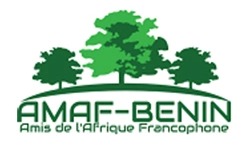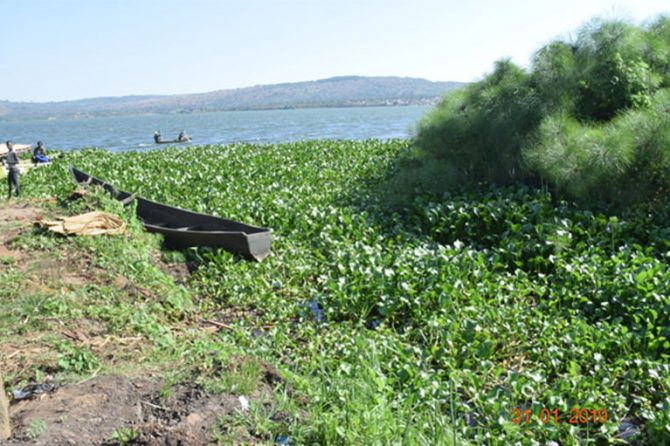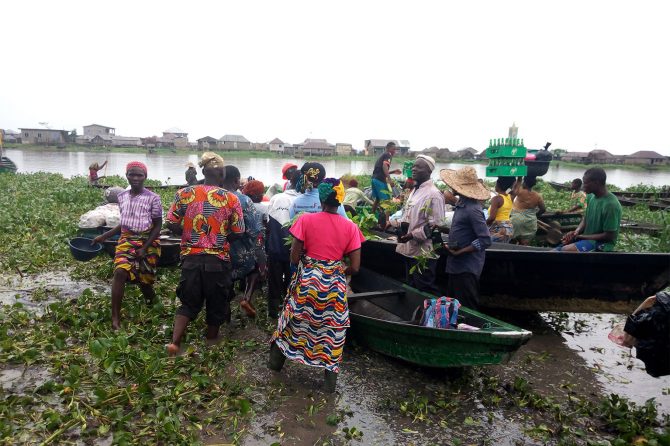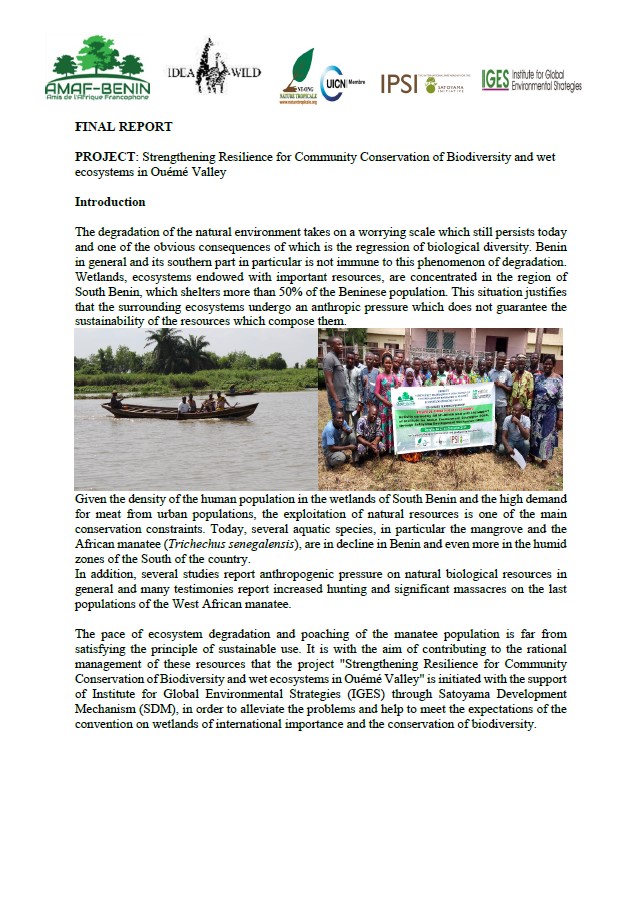2018 BENIN
Strengthening Resilience for Community Conservation of Biodiversity and wet ecosystems in Ouémé Valley
Amis de l’Afrique Francophone - Benin (AMAF-BENIN)
Capacity building
Landscape
Overview
The degradation of the natural environment is both alarming and important. The situation persists even today and one of the obvious consequences is the decline in biological diversity. Benin in general and its southern part in particular has not escaped this phenomenon of degradation. Indeed, the wetlands of Benin, which are ecosystems endowed with important resources, are under pressure and there is no guarantee that these resources are sustainable. In addition, these areas are used as a migration corridor and nesting area for certain vulnerable and endangered species such as the African manatee.
In order to solve these problems, two main activities were developed during this project. First, there has been environmental education of local communities, through community dialogue workshops, including editing and dissemination of sustainable management rules for protection of wetland ecosystems and African manatee. Secondly, there has been training of eco-guards, including a mangrove planting activity involving local communities. This activity has helped to ensure the success of the restoration, and has provided support for the development of alternative income-generating activities to strengthen livelihoods in communities. The results have led to better organisation of local communities and better protection of biodiversity and wetland ecosystems, as well as direct benefits for community livelihoods.
Key achievements
The important achievements of the project are:
- Training and structuring of eco-guards: This action has improved communities' knowledge of the resources of their territories and increased their influence in surveillance and protection of resources;
- Community Dialogue Sessions: These actions brought together local communities, traditional leaders, forest administration officers and Republican police officers to discuss issues related to threats to the natural resources of the area and to define solutions;
- Reforestation of mangrove and native plant species: This action has restored degraded forest ecosystems to facilitate the ecological and cultural functions of the area and contribute to the fight against climate change;
- Development of alternative income-generating activities: This action has encouraged communities, particularly women who promote fuelwood, to convert to other ecological activities (ecological packing sheeds promotion, vegetable production, etc.).
Lessons
- Improving the knowledge of indigenous and local communities and building their capacity is a better way to reassure them of their responsibility and increase their influence in monitoring and conservation of SEPLS.
- For better SEPLS conservation, local communities, in particular riparian communities or guardians of SEPLS, need to be identified and supported to implement alternative income-generating activities that are amenable to preserving biodiversity and SEPLS.
Project location
Organisation

Amis de l’Afrique Francophone - Benin (AMAF-BENIN)
- Sector
- Non-governmental organisation
- Country
- Benin
- Website/SNS
- https://amafbj.wixsite.com/amafbj
Related products
General Report AMAF Project: Strengthening Resilience for Community Conservation of Biodiversity and wet ecosystems in Ouémé Valley
- Publisher
- Amis de l’Afrique Francophone - Benin (AMAF-BENIN)
The degradation of the natural environment takes on a worrying scale which still persists today and one of the obvious consequences of which is the regression of biological diversity. Benin in general and its southern part in particular is not immune to this phenomenon of degradation.
Wetlands, ecosystems endowed with important resources, are concentrated in the region of South Benin, which shelters more than 50% of the Beninese population. This situation justifies that the surrounding ecosystems undergo an anthropic pressure which does not guarantee the sustainability of the resources which compose them.
Given the density of the human population in the wetlands of South Benin and the high demand for meat from urban populations, the exploitation of natural resources is one of the main conservation constraints. Today, several aquatic species, in particular the mangrove and the African manatee (Trichechus senegalensis), are in decline in Benin and even more in the humid zones of the South of the country.
In addition, several studies report anthropogenic pressure on natural biological resources in general and many testimonies report increased hunting and significant massacres on the last populations of the West African manatee.
The pace of ecosystem degradation and poaching of the manatee population is far from satisfying the principle of sustainable use. It is with the aim of contributing to the rational management of these resources that the project "Strengthening Resilience for Community Conservation of Biodiversity and wet ecosystems in Ouémé Valley" is initiated with the support of Institute for Global Environmental Strategies (IGES) through Satoyama Development Mechanism (SDM), in order to alleviate the problems and help to meet the expectations of the convention on wetlands of international importance and the conservation of biodiversity.
Relevant projects
Projects of the same year
Aichi Biodiversity Targets
Aichi Biodiversity Targets
-
Sustainable management of marine living resources
-
Sustainable agriculture, aquaculture and forestry
-
Pressures on vulnerable ecosystems reduced
-
Ecosystems and essential services safeguarded
-
Ecosystems restored and resilience enhanced
-
Traditional knowledge respected and integrated
Sustainable Development Goals
Sustainable Development Goals
-
No poverty
-
Good health and well-being
-
Climate action
-
Life below water
-
Life on land


